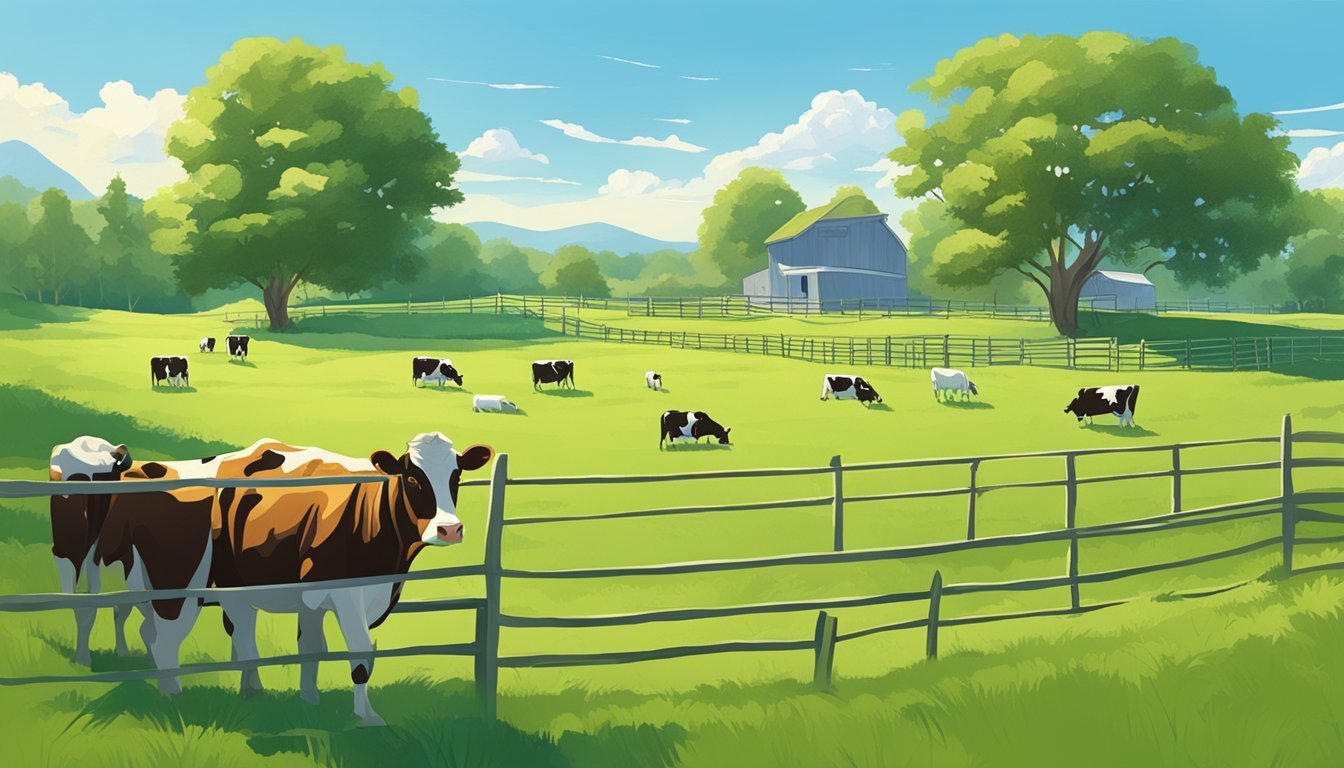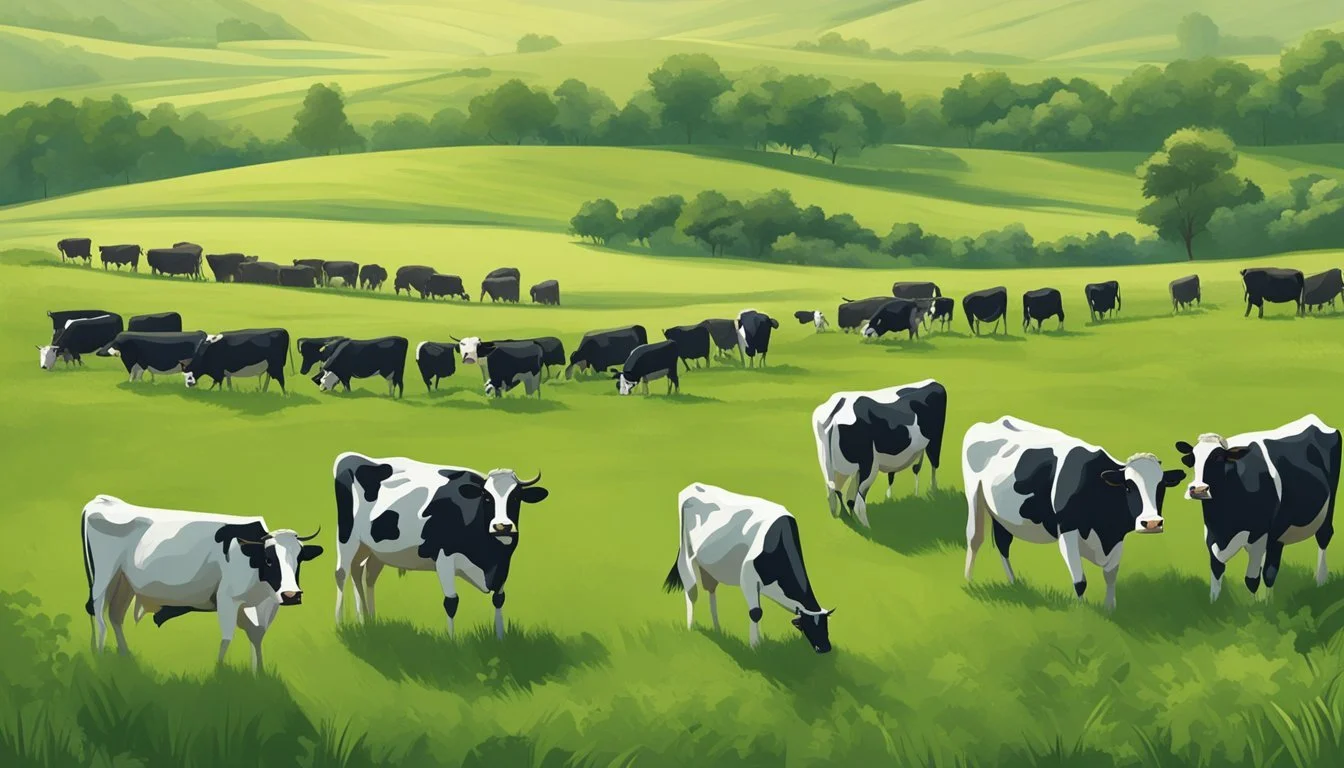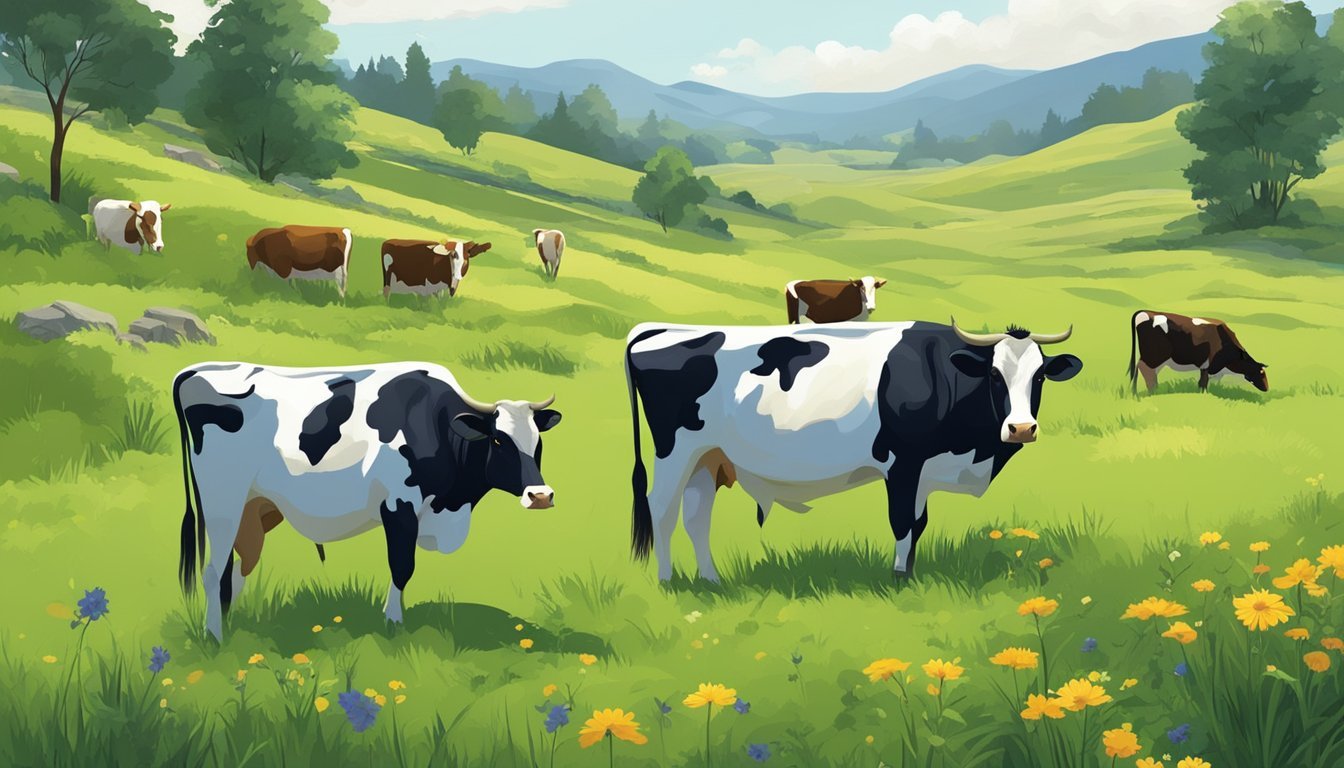Stocking Rate Texas
Determining the Optimal Number of Cows Per Acre
Determining the appropriate stocking rate is a fundamental aspect of livestock management, particularly in Texas, where land conditions can vary substantially. Stocking rate refers to the number of animals a given parcel of land can support without causing long-term damage to the vegetation or soil. In Texas, these rates can range dramatically due to the state's diverse geography and climate, which affect forage production, the primary food source for grazing cattle.
In the more lush, eastern regions of Texas, where pasture management is intensive, the land can often support a higher stocking rate, sometimes as dense as one cow per acre. Moving westward, however, the availability of forage decreases, which significantly lowers the stocking rate. In arid areas like the Trans-Pecos Region, the rate can drop to as low as one cow per 150 acres. Each property in Texas, therefore, requires an individual assessment to understand its specific carrying capacity. This assessment takes into account the forage quality, land management practices, and regional climate variations that all play crucial roles in determining a sustainable stocking rate.
Understanding Stocking Rate
When managing a ranch or agricultural property in Texas, understanding the concept of stocking rate is crucial for sustainable livestock management. It dictates how many cows can be supported per acre based on various local factors, directly influencing a ranch's ecological and economic outcomes.
Defining Stocking Rate and Animal Units
Stocking Rate refers to the number of livestock that can be sustainably grazed on a given amount of land over a certain period. It is typically measured in Animal Units (AUs), which standardize livestock of different types and sizes. One AU typically represents a 1,000-pound cow with or without a calf, as defined by the Natural Resources Conservation Service (NRCS).
Importance of Stocking Rate in Livestock Management
A carefully calculated stocking rate is vital to maintain the balance between forage availability and livestock needs, preventing overgrazing and ensuring pasture recovery. In ranching, adhering to an appropriate stocking rate can mean the difference between a thriving ecosystem and a degraded landscape.
Factors Affecting Stocking Rate in Texas
Several factors determine the appropriate stocking rate in Texas, including:
Climate Variability: Texas’ diverse climate ranges from humid in the east to arid in the west.
Soil Fertility: Richer soils support more forage and therefore more livestock.
Forage Type and Availability: Pasture composition and growth rates affect how many cows per acre can be supported.
Land Management Practices: Intensive management such as rotational grazing can increase stocking capacity.
Local Regulations: The NRCS and other agencies provide guidelines and recommendations for stocking rates.
Ranchers must consider these factors to determine the optimal number of cattle their land can support while maintaining ecosystem health.
Determining Your Property's Carrying Capacity
To support a healthy cattle population, it's essential to accurately determine your property's carrying capacity. This involves a balance between available forage and the amount consumed by livestock.
Measuring Forage Production
Forage production must be measured to assess how much feed is available to livestock. This is typically expressed in pounds of dry matter per acre. Total annual forage production can vary widely based on factors like soil fertility, precipitation, and grass species. A forage inventory should be conducted annually to estimate the pounds of forage produced per acre.
Calculating Dry Matter Forage Availability
Available forage is not merely the forage present; it's the forage that can sustainably be consumed by cattle. To calculate this, landowners must account for the dry matter forage availability, which is the actual weight of the forage minus any water content. This dry matter basis is crucial to determine the true nutritive availability for cattle.
Forage production (lbs/acre)
Less: non-grazable areas (e.g., rocks, water bodies)
Equals: Total edible forage
Assessing Grazing Pressure and Utilization Rate
The grazing pressure indicates how many animals the land can support throughout the year without overgrazing. Utilization rate is the percentage of total forage that cattle will consume. Not all forage produced is available for grazing due to trampling, weather losses, and conservation needs for plant health.
Total forage availability
Multiplied by: Utilization rate (typically 25% to 50% for sustainable grazing)
Equals: Forage available for consumption
It's critical to monitor the utilization rate and adjust stocking rates accordingly to maintain the ecological health of the rangeland and ensure a long-term sustainable operation.
Grazing Management Practices
Effective grazing management practices are paramount in sustaining the productivity of pastures while ensuring the health of the rangeland ecosystem. Strategic planning and consistent execution form the foundation of successful livestock management in Texas.
Implementing Rotational Grazing
Rotational grazing is a deliberate system where cattle are moved between pastures, or paddocks, to allow vegetation in previously grazed areas to recover. This method:
Maximizes forage growth: Optimizes the use of available forage.
Enhances pasture longevity: Reduces the stress on grass plants, promoting longer-lasting pastures.
Preventing Overgrazing
Preventing overgrazing is crucial to maintain a healthy balance between forage production and livestock consumption. Key steps include:
Timely Livestock Rotation: Move cattle before they graze grass below 3 inches.
Stocking Rate Adjustments: Adapt the number of cows per acre according to forage availability.
Maintaining Pasture Health
Pasture health is the linchpin of a sustainable grazing system and involves:
Soil Fertility Management: Regular testing and appropriate fertilization improve forage quality and yield.
Weed Control: Reduces competition for resources, ensuring grasses have adequate sunlight and nutrients.
Land and Forage Types in Texas
Texas comprises diverse land types and forage resources, each suited for different stocking rates. The state's size and varied climate contribute to a range of pastures and wooded areas, influencing how many cows per acre the land can support.
Characteristics of Texas Regions
Eastern Texas – This region is characterized by higher rainfall and humidity, supporting lush, heavily managed pastures that can sustain higher stocking rates, up to 1 cow per acre. In contrast, Western Texas, including the Trans Pecos Region, is arid, and the land can often only support 1 cow per 150 acres.
Central Texas typically includes a mix of native and improved pastures.
Southern Texas is known for its brush country and can support various stocking rates depending on management and climate factors.
Native Grass Vs. Tame Pastures
Native Grass Pastures in Texas are typically more drought resistant and adapted to local conditions. They can thrive without intensive management but might support fewer cattle per acre compared to improved pastures.
Tame Pastures are seeded with introduced species optimized for higher forage production. These pastures can potentially support a greater number of cows per acre but require more inputs, such as fertilizers and water.
Managing Wooded Areas and Post Oak Savannah
Wooded Areas can support cattle but typically at lower rates than open pastures. Sustainable management involves maintaining a balance between the woodland and grassland coverage to ensure adequate forage while preserving habitat.
Post Oak Savannah, a unique ecosystem in Texas, combines woodland with open grassy areas. Proper management here is crucial to maintain the savannah's delicate balance, which supports a specific stocking rate that differs from that of denser forests or open plains.
Supplemental Feed and Alternative Forage
When managing the stocking rates on Texas properties, landowners can optimize their forage utilization by incorporating supplemental feed and alternative forage strategies.
Incorporating Clover and Rye into Grazing
Clover and rye offer nutritious options that can enhance forage production during certain times of the year. By integrating these species into grazing practices, a landowner can improve soil fertility and thus support higher livestock stocking rates. Clover, being a legume, fixes nitrogen into the soil, which benefits the following forage crops. Winter rye, a cereal grain, serves as an excellent cool-season forage, and is capable of producing high-quality feed when perennial grasses are dormant.
Benefits of Clover:
Increases soil nitrogen levels
Provides high-protein forage
Benefits of Rye:
Extends the grazing season into cooler months
Reduces soil erosion and improves soil structure
The Role of Biodiversity in Forage Availability
A biodiverse pasture is more resilient and often has higher forage availability. Biodiversity in forage species not only supports a more stable ecosystem but also ensures that there is a steady supply of feed throughout various seasons and under different environmental conditions.
Key Points:
Increased Resilience: Diverse plant species can withstand pests and diseases better, reducing the risk of feed shortages due to plant die-offs.
Seasonal Adaptation: Different species peak in forage production at different times, ensuring a year-round supply of forage.
By focusing on the incorporation of supplemental feed like clover and rye, as well as enhancing biodiversity within pastures, Texas landowners can achieve a more efficient and sustainable grazing system.
Stocking Strategies for Different Livestock
The section ahead provides specific guidelines on managing different types of livestock in terms of stocking rates, tailored to optimize land utilization without stressing the pasture.
Cattle and Stocker Calves
Texas recommended stocking rates:
Improved/Managed Pasture:
1 Animal Unit (AU) per 1-3 acres
Native Pasture:
1 AU per 3-6 acres
An Animal Unit is defined as one 1000-pound beef cow.
For stocker calves, these rates can fluctuate based on growth goals and forage quality. Calves generally require more intensive management and could benefit from tighter stocking in well-managed pastures. Monitoring weight gain and pasture conditions is significant to adjust stocking rates as needed.
Sheep, Goats, and Other Livestock
Sheep and goats, being smaller and of different grazing behavior, generally require less space than cattle.
Stocking rates for sheep and goats in Texas:
Improved/Managed Pasture:
Approximate 5-7 sheep or goats per acre
Native Pasture:
Varies significantly, but can be estimated at 2-4 sheep or goats per acre
These livestock can coexist well with cattle within a system, allowing for mixed stocking strategies, which can maximize pasture usage and reduce parasites due to cross-grazing. Regular health checks and rotational grazing are critical to sustainably manage these animals’ environment.
Legal and Financial Considerations
When assessing the ability of rural land to support cattle, property owners need to be aware of the legal frameworks governing property use and the financial implications of leasing and stocking densities. Accurate knowledge of these considerations is necessary to maximize the land's potential while adhering to regulations and ensuring profitability.
Understanding Property Use and Leases
Property use agreements and leases should explicitly state the terms under which land can be used for livestock. Property owners should consult local regulations to understand zoning laws and obtain any necessary permits for agricultural use. They must also negotiate lease terms, which can include:
Lease duration: The length of time the lessee is permitted to use the land.
Stocking rate: Agreements may specify the maximum number of cattle per acre.
Responsibility for land management: Assign duties for maintenance and improvements.
Leases should be drafted with clarity to prevent misunderstandings and should be reviewed by a legal professional to ensure compliance with state and local laws.
Conducting a Survey for Stock Density
A professional survey can provide landowners with a definitive guide on the recommended stock density for their property, considering its unique characteristics. The survey process includes:
Soil testing: To determine land fertility and suitability for grazing.
Forage assessment: Evaluating the types and quantities of grasses available.
Water resources: Availability of water for livestock.
This information, combined with historical data on regional stocking rates, supports informed decisions on the number of cattle the property can sustainably support, balancing ecological health with financial viability.
Creating a Sustainable Grazing Plan
Developing a sustainable grazing plan is a science-based approach that enables property managers to determine the optimal stocking rate for their land. It involves a balance between the number of animal units (AU) and the forage consumption rates to maintain rangeland health.
Step 1: Assess Forage Availability
Property managers must first assess the volume and type of forage available. Texas rangeland varies significantly; for example, East Texas may support 1 AU per 1-3 acres on improved pasture, and 1 AU per 3-6 acres on native pasture.Step 2: Determine Animal Units
Animal units provide a standard to compare different classes of livestock based on forage consumption. Generally, 1 AU is equivalent to one mature cow or about 1,000 pounds of livestock.Step 3: Calculate Stocking Rate
The calculated stocking rate reflects how much land is allocated per AU. Managers should consider both the quantity and quality of grazeable forage throughout the year. For instance, native pastures might support fewer AUs than improved pastures.Step 4: Incorporate Adaptive Management
Sustainable grazing requires ongoing assessment and flexibility in management practices. This includes monitoring forage growth, adjusting livestock numbers as necessary, and planning for rest periods to aid pasture recovery.
By integrating these considerations, a sustainable grazing plan supports land productivity and animal health. It ensures that property managers can maintain their herds without depleting resources, which is essential for long-term success in livestock operations.







